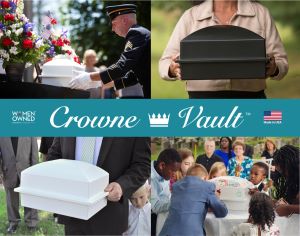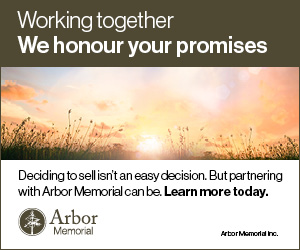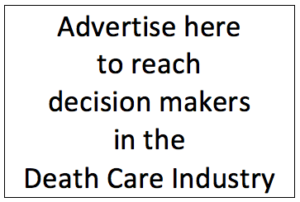Content planning to boost a funeral home’s online presence

Boosting Your Funeral Home’s Online Presence: An Action Plan for Content That Engages and Builds Trust
In today’s digital world, a funeral home website is far more than a static brochure. It’s the front door of your business for many families — the first place they turn when they need information, reassurance and guidance.
As a funeral home owner, you can use your website not only to inform but to connect, comfort and build trust long before a family walks through your physical doors.
One of the most effective ways to achieve this is through a thoughtful, consistent blog strategy. A well-maintained blog boosts your visibility in search engines, drives more local traffic, and positions you as a trusted resource in your community. Below, I’ve outlined a practical content plan that blends education, compassion and local relevance to help you grow your online presence and deepen your community connections.

Welton Hong
Ring Ring Marketing
Guest author for today’s edition of Funeral Director Daily is Welton Hong, the founder & CEO of Ring Ring Marketing, which has helped over 600 small businesses grow their revenue through online marketing strategies. He is also the author of “Making Your Phone Ring with Internet Marketing for Funeral Homes.”
To learn more about how Welton Hong can help your company visit the Ring Ring Marketing website here.
Creating Content That Families Value
When families search online for funeral-related information, they’re often looking for clear answers to sensitive questions. Your content should anticipate these needs and present the information in an approachable, compassionate tone. Instead of simply promoting your services, focus on providing genuine help.
For example, you could guide readers through the steps of planning a funeral, explaining what to expect and how to avoid common pitfalls. Families also appreciate clarity on the differences between a traditional funeral, a memorial service and a celebration of life — complete with ideas on how each can be personalized. By offering this kind of content, you position yourself as both knowledgeable and approachable.
You might also create resources for those in the earliest, most difficult hours after a loved one dies. A blog post outlining the first 24 hours — including who to call, what paperwork is needed, and where to find local grief support — can become one of the most valuable pages on your site.
Personalization ideas are another rich topic. Many families today want creative, meaningful services. By sharing stories of such tributes (with permission) and offering inspiration for music, readings, video memorials and décor, you help spark ideas while subtly showing that your funeral home can bring them to life.
Educating and Empowering Families
Your blog can also serve as an educational hub. Simple how-to guides — such as “how to write a heartfelt obituary” or “how to support a grieving friend” — not only attract search traffic but also provide content that’s likely to be shared on social media. Practical etiquette advice, especially when tailored to cultural or religious customs common in your area, can further strengthen your role as a trusted adviser.
For those thinking ahead, an article on the benefits of preplanning can reframe the conversation from morbid to meaningful. Emphasizing how preplanning reduces stress for loved ones and even saves money can help more families see it as a thoughtful gift rather than an uncomfortable task.
You might also explore emerging topics, such as green burials or the role of technology in modern funerals — from livestreaming to virtual guestbooks. These not only position you as forward-thinking but also attract families who value environmental consciousness or who want to make attending a service convenient for distant loved ones.
Building Local Relevance
One of the most overlooked opportunities for funeral home blogs is hyper-local content. A comprehensive guide to burial options and cemeteries in your city, complete with photos and maps, is a powerful local SEO tool. Similarly, maintaining an up-to-date list of grief support resources in your area ensures your site becomes a go-to hub for anyone seeking help.
For instance, you may want to write a blog post highlighting local cemeteries, details about sections, historical significance and types of burial options. A short photo essay showcasing gardens and memorials would certainly attract visitors.
Another post could focus on grief support groups available in your city, which hopefully includes a group that meets at your funeral home. Include contact information and schedules.
Local content signals to Google — and to families — that you are rooted in and committed to your community. It also increases the chances that your posts will be shared by local organizations, driving referral traffic and building goodwill.
Best Practices for Funeral Home Blogging
While the topics themselves are important, the way you present them is equally critical. Keep your tone compassionate and conversational, avoiding jargon and speaking as if you were explaining something to a family in person. Break up your articles with subheadings, bullet points, and images to make them easy to skim.
Include photos of your facility, staff, and community events where possible — real images build trust far more effectively than stock photography. Where appropriate, weave in gentle calls-to-action at the end of each post, such as inviting readers to schedule a preplanning appointment or call for more information.
Maximizing the Impact of Your Content
A successful blog is part of a larger content marketing strategy. Incorporate keywords naturally, including your city or neighborhood name, to improve your chances of appearing in local search results. Pay attention to the kinds of questions people ask your staff or send you via email as they can often provide ideas on what to highlight.
Once you’ve created a blog post, repurpose it. A guide on writing obituaries can become an Instagram graphic or a short educational video. This multiplies your reach without multiplying your workload.
Finally, commit to consistency. Publishing new articles every two to four weeks keeps your website fresh, which both search engines and visitors appreciate. Use tools like Google Analytics to track which posts get the most attention, then build more content around those popular topics.
The Bottom Line
Your funeral home blog is more than just a marketing tool — it’s a service to your community. By offering compassionate, practical, and locally relevant information, you create a digital presence that builds trust, strengthens your reputation and opens the door to deeper relationships with the families you serve.
When done well, this approach not only boosts website traffic and engagement but also ensures your funeral home stands out as a caring, knowledgeable, and indispensable resource in times of need.
Enter your e-mail below to join the 3,201 others who receive Funeral Director Daily articles daily
“A servant’s attitude guided by Christ leads to a significant life”





















